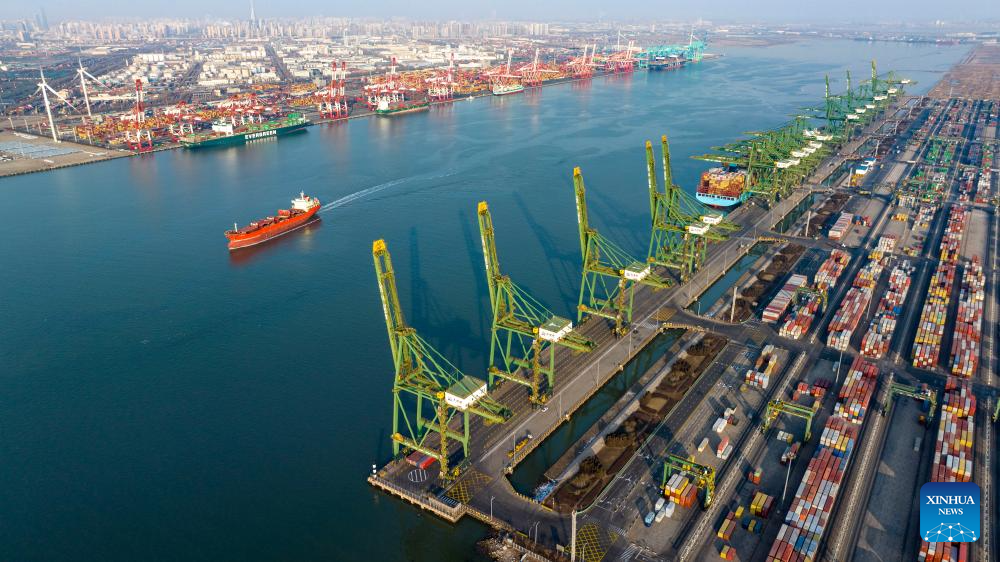
An aerial drone photo taken on Feb. 2, 2024 shows a cargo ship sailing in the main channel of Tianjin Port in north China's Tianjin. Tianjin Port, located on the coast of the Bohai Sea, is a major shipping point in north China.
In recent years, taking full advantage of its unique location, Tianjin Port has continuously improved its port functions to build a high-level maritime gateway for the Beijing-Tianjin-Hebei region. It has successively opened a green channel serving the Xiong'an New Area, set up a service center coordinating port services between the port and Beijing's CBD, and launched sea-rail freight trains linking itself with Pinggu District of Beijing, Xingtai City in north China's Hebei Province and other areas. The port now has trade links with over 500 ports in more than 180 countries and regions.
In 2021, the world's first smart zero-carbon terminal was put into operation in Tianjin Port and an autonomous driving demonstration zone was set up here.
According to statistics, the container throughput of Tianjin Port exceeded 22.17 million twenty-foot equivalent units (TEUs) in 2023, up 5.5 percent year on year. (Xinhua/Zhao Zishuo)
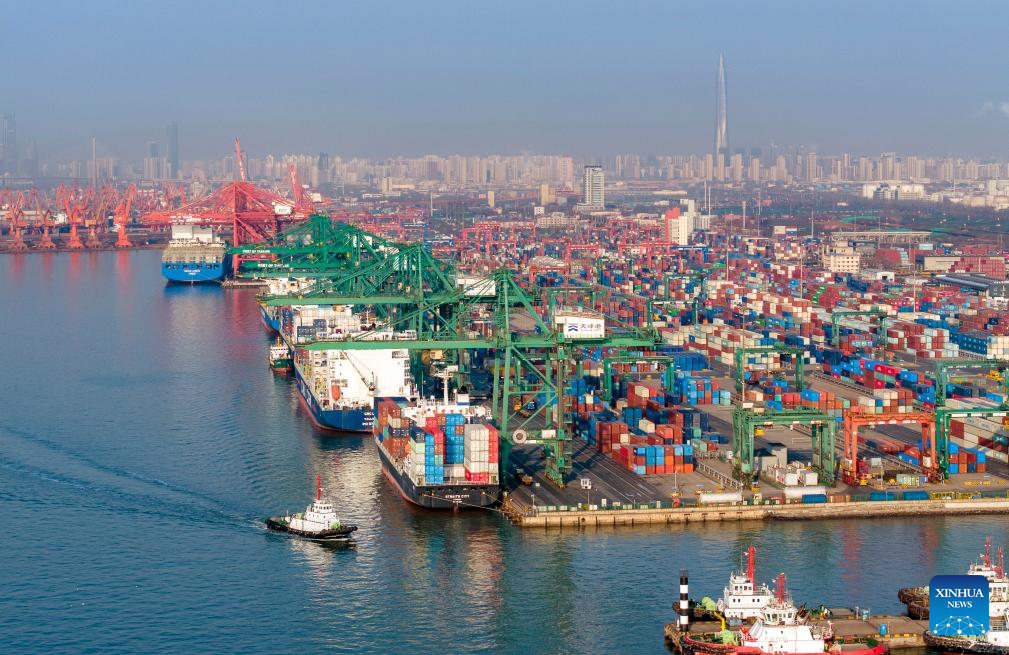
An aerial drone photo taken on Feb. 2, 2024 shows container vessels berthing at a container terminal of Tianjin Port in north China's Tianjin. Tianjin Port, located on the coast of the Bohai Sea, is a major shipping point in north China.
In recent years, taking full advantage of its unique location, Tianjin Port has continuously improved its port functions to build a high-level maritime gateway for the Beijing-Tianjin-Hebei region. It has successively opened a green channel serving the Xiong'an New Area, set up a service center coordinating port services between the port and Beijing's CBD, and launched sea-rail freight trains linking itself with Pinggu District of Beijing, Xingtai City in north China's Hebei Province and other areas. The port now has trade links with over 500 ports in more than 180 countries and regions.
In 2021, the world's first smart zero-carbon terminal was put into operation in Tianjin Port and an autonomous driving demonstration zone was set up here.
According to statistics, the container throughput of Tianjin Port exceeded 22.17 million twenty-foot equivalent units (TEUs) in 2023, up 5.5 percent year on year. (Xinhua/Zhao Zishuo)
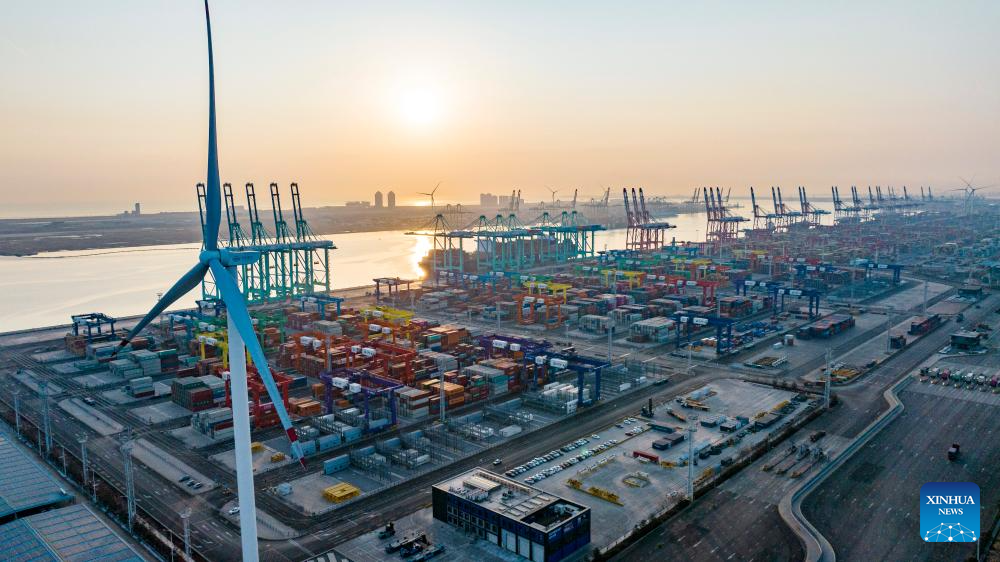
An aerial drone photo taken on Feb. 2, 2024 shows the smart zero-carbon terminal of Tianjin Port in north China's Tianjin. Tianjin Port, located on the coast of the Bohai Sea, is a major shipping point in north China.
In recent years, taking full advantage of its unique location, Tianjin Port has continuously improved its port functions to build a high-level maritime gateway for the Beijing-Tianjin-Hebei region. It has successively opened a green channel serving the Xiong'an New Area, set up a service center coordinating port services between the port and Beijing's CBD, and launched sea-rail freight trains linking itself with Pinggu District of Beijing, Xingtai City in north China's Hebei Province and other areas. The port now has trade links with over 500 ports in more than 180 countries and regions.
In 2021, the world's first smart zero-carbon terminal was put into operation in Tianjin Port and an autonomous driving demonstration zone was set up here.
According to statistics, the container throughput of Tianjin Port exceeded 22.17 million twenty-foot equivalent units (TEUs) in 2023, up 5.5 percent year on year. (Xinhua/Zhao Zishuo)
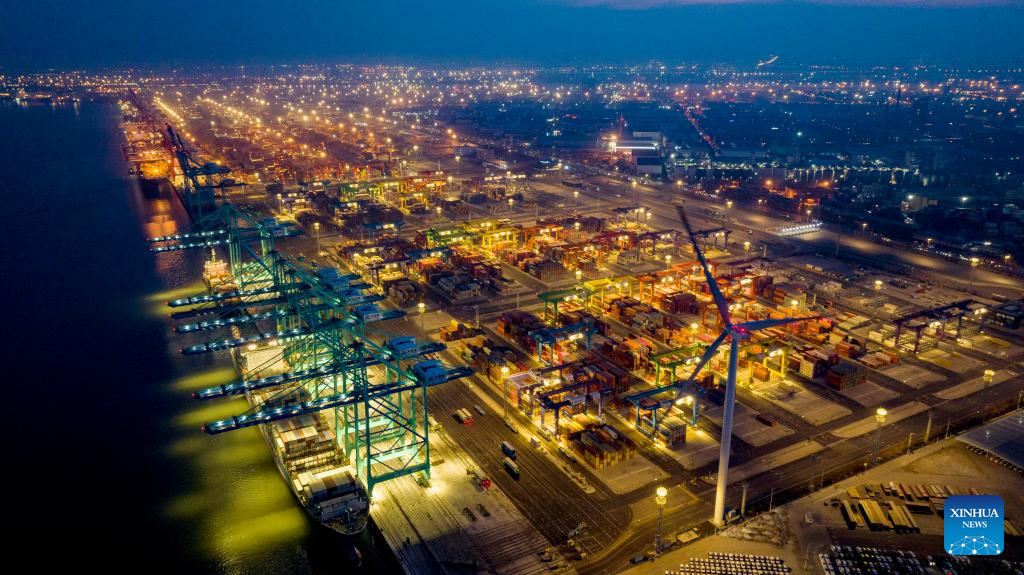
An aerial drone photo taken on Feb. 3, 2024 shows a container terminal of Tianjin Port in north China's Tianjin. Tianjin Port, located on the coast of the Bohai Sea, is a major shipping point in north China.
In recent years, taking full advantage of its unique location, Tianjin Port has continuously improved its port functions to build a high-level maritime gateway for the Beijing-Tianjin-Hebei region. It has successively opened a green channel serving the Xiong'an New Area, set up a service center coordinating port services between the port and Beijing's CBD, and launched sea-rail freight trains linking itself with Pinggu District of Beijing, Xingtai City in north China's Hebei Province and other areas. The port now has trade links with over 500 ports in more than 180 countries and regions.
In 2021, the world's first smart zero-carbon terminal was put into operation in Tianjin Port and an autonomous driving demonstration zone was set up here.
According to statistics, the container throughput of Tianjin Port exceeded 22.17 million twenty-foot equivalent units (TEUs) in 2023, up 5.5 percent year on year. (Xinhua/Zhao Zishuo)
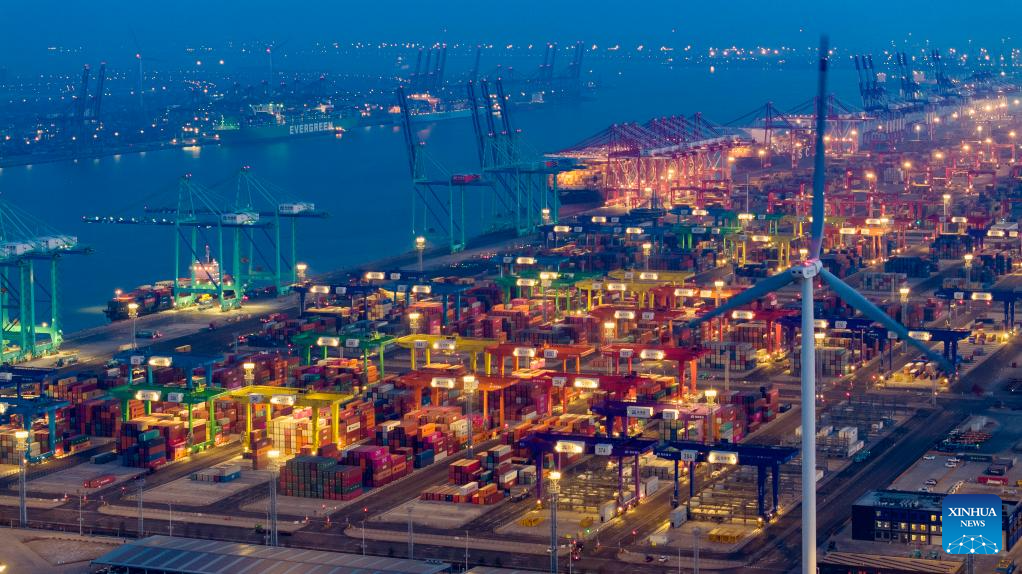
An aerial drone photo taken on Feb. 3, 2024 shows a container terminal of Tianjin Port in north China's Tianjin. Tianjin Port, located on the coast of the Bohai Sea, is a major shipping point in north China.
In recent years, taking full advantage of its unique location, Tianjin Port has continuously improved its port functions to build a high-level maritime gateway for the Beijing-Tianjin-Hebei region. It has successively opened a green channel serving the Xiong'an New Area, set up a service center coordinating port services between the port and Beijing's CBD, and launched sea-rail freight trains linking itself with Pinggu District of Beijing, Xingtai City in north China's Hebei Province and other areas. The port now has trade links with over 500 ports in more than 180 countries and regions.
In 2021, the world's first smart zero-carbon terminal was put into operation in Tianjin Port and an autonomous driving demonstration zone was set up here.
According to statistics, the container throughput of Tianjin Port exceeded 22.17 million twenty-foot equivalent units (TEUs) in 2023, up 5.5 percent year on year. (Xinhua/Zhao Zishuo)
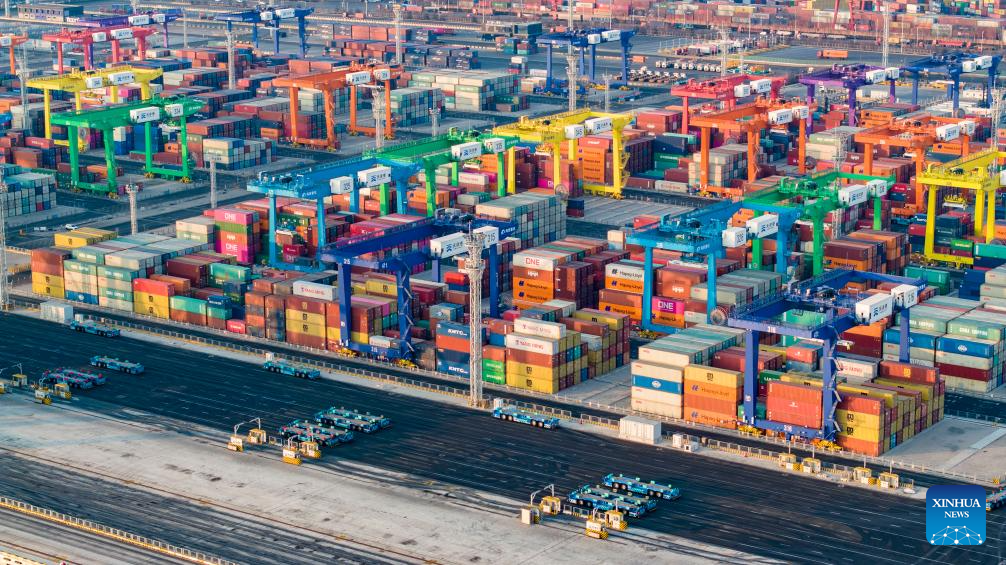
An aerial drone photo taken on Feb. 2, 2024 shows the smart zero-carbon terminal of Tianjin Port in north China's Tianjin. Tianjin Port, located on the coast of the Bohai Sea, is a major shipping point in north China.
In recent years, taking full advantage of its unique location, Tianjin Port has continuously improved its port functions to build a high-level maritime gateway for the Beijing-Tianjin-Hebei region. It has successively opened a green channel serving the Xiong'an New Area, set up a service center coordinating port services between the port and Beijing's CBD, and launched sea-rail freight trains linking itself with Pinggu District of Beijing, Xingtai City in north China's Hebei Province and other areas. The port now has trade links with over 500 ports in more than 180 countries and regions.
In 2021, the world's first smart zero-carbon terminal was put into operation in Tianjin Port and an autonomous driving demonstration zone was set up here.
According to statistics, the container throughput of Tianjin Port exceeded 22.17 million twenty-foot equivalent units (TEUs) in 2023, up 5.5 percent year on year. (Xinhua/Zhao Zishuo)
(Editor: fubo )


